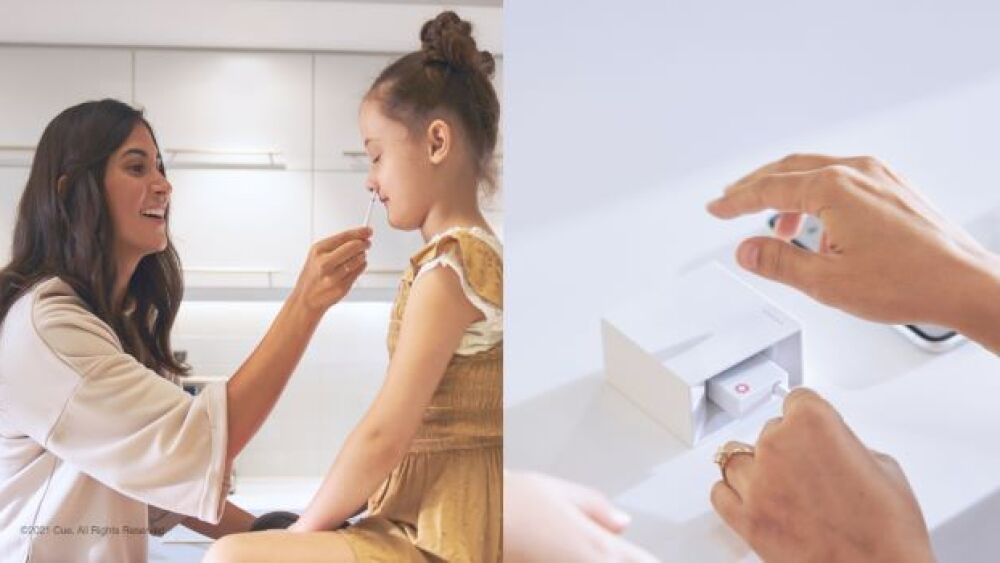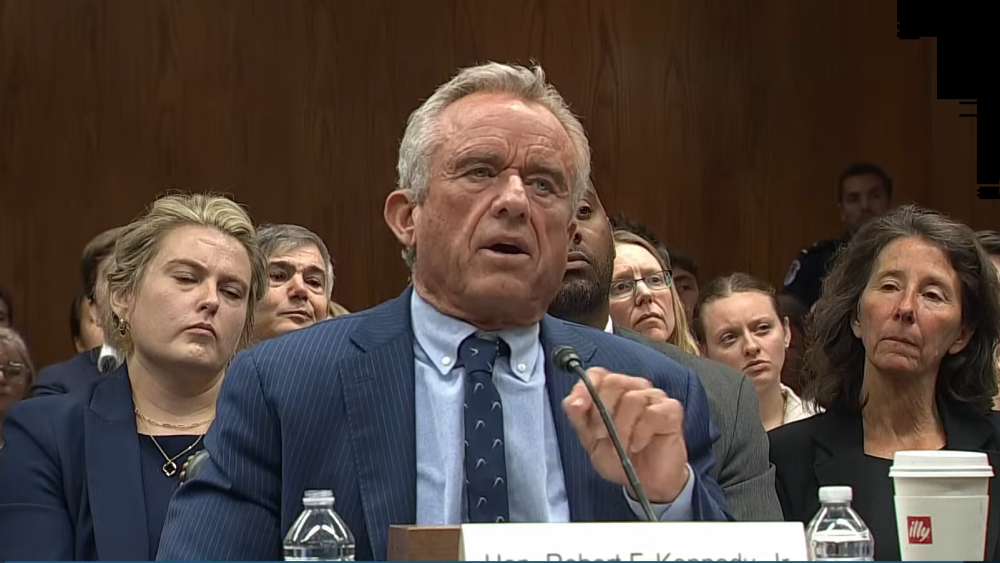Cue Health went public on September 24 on the Nasdaq securities exchange under the ticker symbol HLTH.
Cue Health PoC test /Courtesy of Cue Health.
Cue Health, which develops molecular tests for at-home and point-of-care use, went public on September 24 on the Nasdaq securities exchange under the ticker symbol HLTH. The 12.5 million shares of common stock opened at about $16 – midway in the projected $15 to $17 range. Goldman Sachs & Co. LLC, Morgan Stanley & Co. LLC, and Cowen and Company, LLC acted as lead book-running managers for the offering, along with BTIG, LLC.
For Cue’s executives and more than1,250 employees, transitioning to a public company is a major step toward achieving the company’s goal of empowering people in terms of how they interact with their own healthcare. “We want to be the hub of healthcare in the home, and anywhere else (diagnostic information) is needed,” Clint Sever, co-founder and chief product officer, told BioSpace. “Pairing fast, portable diagnostic tests with virtual care will reshape the healthcare system.”
Cue’s first product, a diagnostic test for COVID-19, received emergency use authorization from the U.S. Food & Drug Administration in spring 2020. “But we’re more than just a COVID-19 testing company,” Sever said. “This is a platform technology.
“When we started building the diagnostic platform technology around 2009, the swine flu pandemic was ending. We realized there was a need for a product that anyone could use to perform a flu test. It had to be simple enough for people to use at home.”
With it, people who had the flu could receive the care they needed and people who tested negative wouldn’t need to enter the healthcare system for influenza testing.
Simply knowing whether they had the flu could save individuals time and money by eliminating trips to healthcare providers. Lessening the numbers of patients in waiting rooms could minimize disease transmission, as well as help healthcare providers focus their efforts on those who actually had the flu or other diseases. During the ongoing COVID-19 pandemic, Cue’s COVID-19 test has helped achieve those goals.
Now, Sever said, “our IPO means we can grow our menu of tests.” He said Cue plans to begin clinical trials or validation studies later this year for its influenza and respiratory syncytial virus (RSV) diagnostic tests. Additional tests are being developed for women’s health, and for cardio, metabolic and sexual health conditions. The IPO also will enable Cue to expand its software and services offering, production capabilities, and build out its team.
The diagnostic test comes in kit form, with everything patients need to extract a sample and analyze it. Basically, a patient uses a lower nasal swab to extract a sample and puts it in a cartridge, where its DNA is amplified using a nucleic acid amplification test (NAAT). Amplification is performed on the palm-sized, rechargeable Cue Cartridge Reader. Results are sent to the patient’s Bluetooth-enabled cell phone or computer in about 20 minutes.
The accuracy of test results is comparable to PCR laboratory tests. A comparison of the two found 97.4% agreement for positive cases and 99.1% agreement for negative cases, according to Cue literature.
The COVID-19 test focuses on a conserved region of the SARS-CoV-2 genome, amplifying it for target identification. “Its accuracy was verified independently by the Mayo Clinic and others,” Sever said.
For example, in a paper published in Diagnostic Microbiology and Infectious Disease last May, Mayo Clinic researchers found, “the Cue COVID-19 test demonstrated very good positive and negative percent agreement with central laboratory tests and will be useful in settings where accurate POC testing is needed to facilitate management of patients suspected of COVID-19.”
That paper compared results from the Cue platform to those of other NAATs in 292 symptomatic and asymptomatic COVID-19 outpatients. There was 95.7% agreement on positive cases (excluding one patient with no tie-breaker method of determination). For negative results, there was 98.4% agreement. Invalid or canceled results comprised 8.6% of the results.
This COVID-19 test “offers speed along with lab-quality accuracy. It’s being used by thousands of schools, nursing homes, other congregant care facilities, healthcare providers (including physicians and dentists) and businesses,” Sever said.
The test is linked to telehealth providers for any needed follow-up. “We’re creating a virtual care marketplace where consumers and providers can come together and interact over diagnostic information,” he noted. Consequently, people will be able to purchase the test without a prescription, get results, present them to a physician online through a telehealth portal and receive treatment. Physicians and healthcare providers will have many ways to join this emerging network, Sever said.






